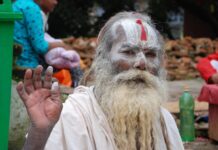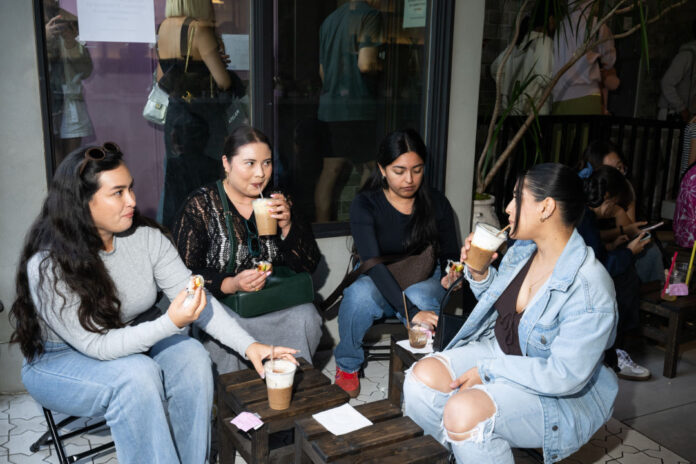This post was originally published on this site

This summer, the party is at the matcha café.
In college, I camped out for four weeks in a tent line to watch the Duke-Carolina game. I still go to the post office. I’ve waited in countless lines for streetwear drops in NYC with my runway model cousin, usually in vain. Recently, I noticed the sidewalk-blocking lines snaking outside Seattle’s newest matcha cafés and wondered what gave them the same pull as rivalry basketball or Vlone shirts in 2017.
The younger someone is, the more likely they are to be enthusiastic about waiting in line: A 2024 survey found that 92 percent of Gen Z Americans who stood in a food line for 30 minutes or more thought it was worth it. As a 44-year-old, “worth it” is an extremely high bar in Seattle. I would want the entire menu at the erstwhile Il Corvo after waiting that long, or at the very least Triumph Valley dumplings.
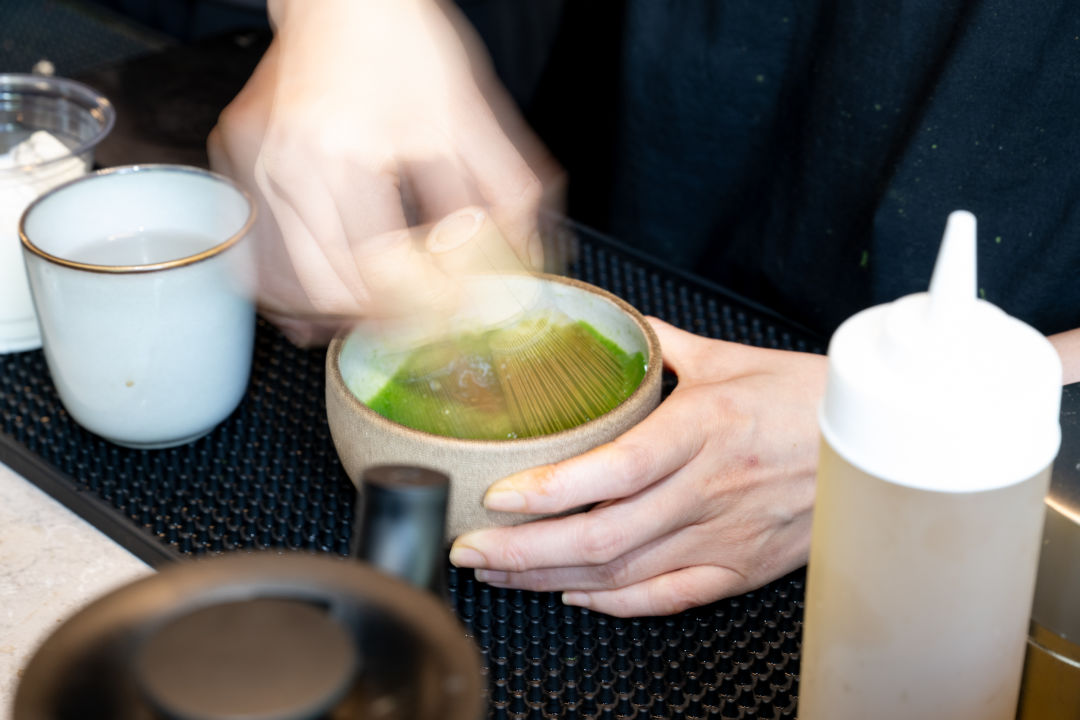
Phê’s hand-whisked tea is the drink of the summer.
Seattle is, of course, no stranger to matcha; places like Miro Tea and Nana’s Green Tea have been serving it for years. But new owners are bringing their own backgrounds—Vietnamese, Korean, and Filipino—and a creative flair to the scene, with flavors like banana puree, black sesame foam, and lychee syrup with sparkling water. These inventive drinks are also pixel-perfect color pops built to be lusted after on social media. The FOMO, the hype, the ’gram—it’s just entertainment, and I was skeptical of it all, until I finally got the tea.
The world of matcha is similar to what people already experience with pour-over coffee: hand-crafted pleasure. The magic of personal attention, bespoke manual creations, anticipation, and taste; the matcha experience is even more theatrical. It’s a different type of activity than grinding, pouring carefully, and dripping—a spiritual stirring of the core of my drink.
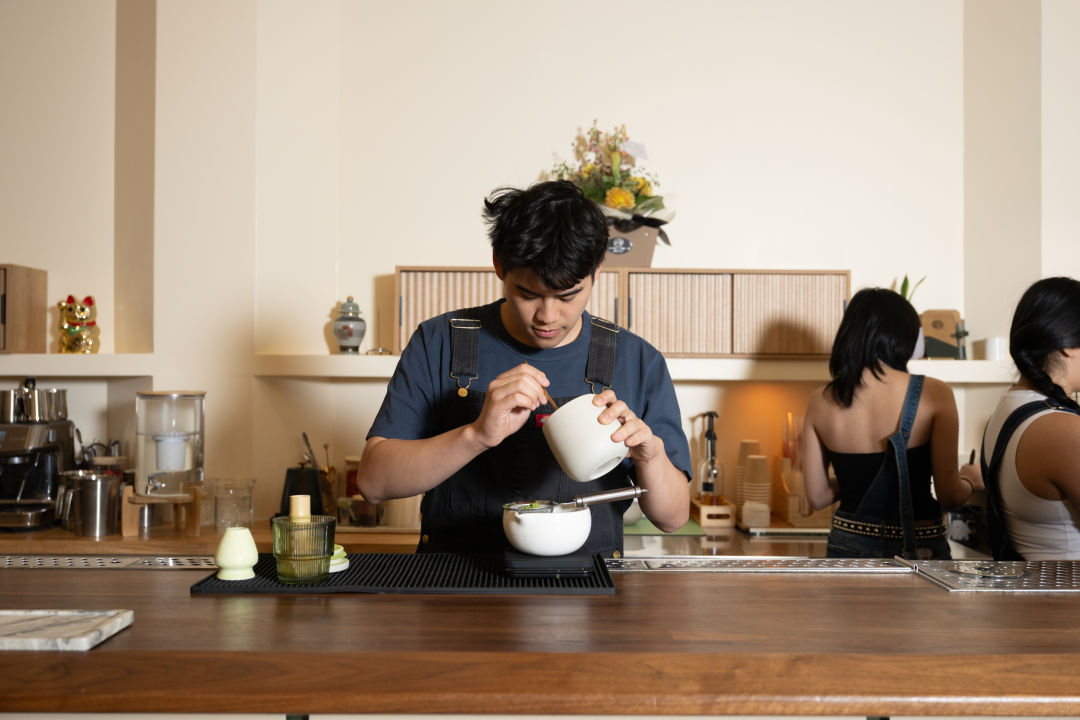
Taz focuses on Japanese-style customer service and serenity.
At each place I visited, a barista carefully weighed the matcha into a bowl, hot water kettle at the ready. They hand-whisked ceremonial-grade powdered matcha into a beautiful, bubbly, earthy green foam. The color gradient reminded me of slowly walking through the Hall of Mosses at Olympic National Park.
I’ve learned to lean into the moment and appreciate the individualized attention of each drink. To eavesdrop, to pay attention to the person whisking, the person pouring the tea into my drink, the person adding the topping. Matcha is a ceremony, and standing in line has become part of the ritual.
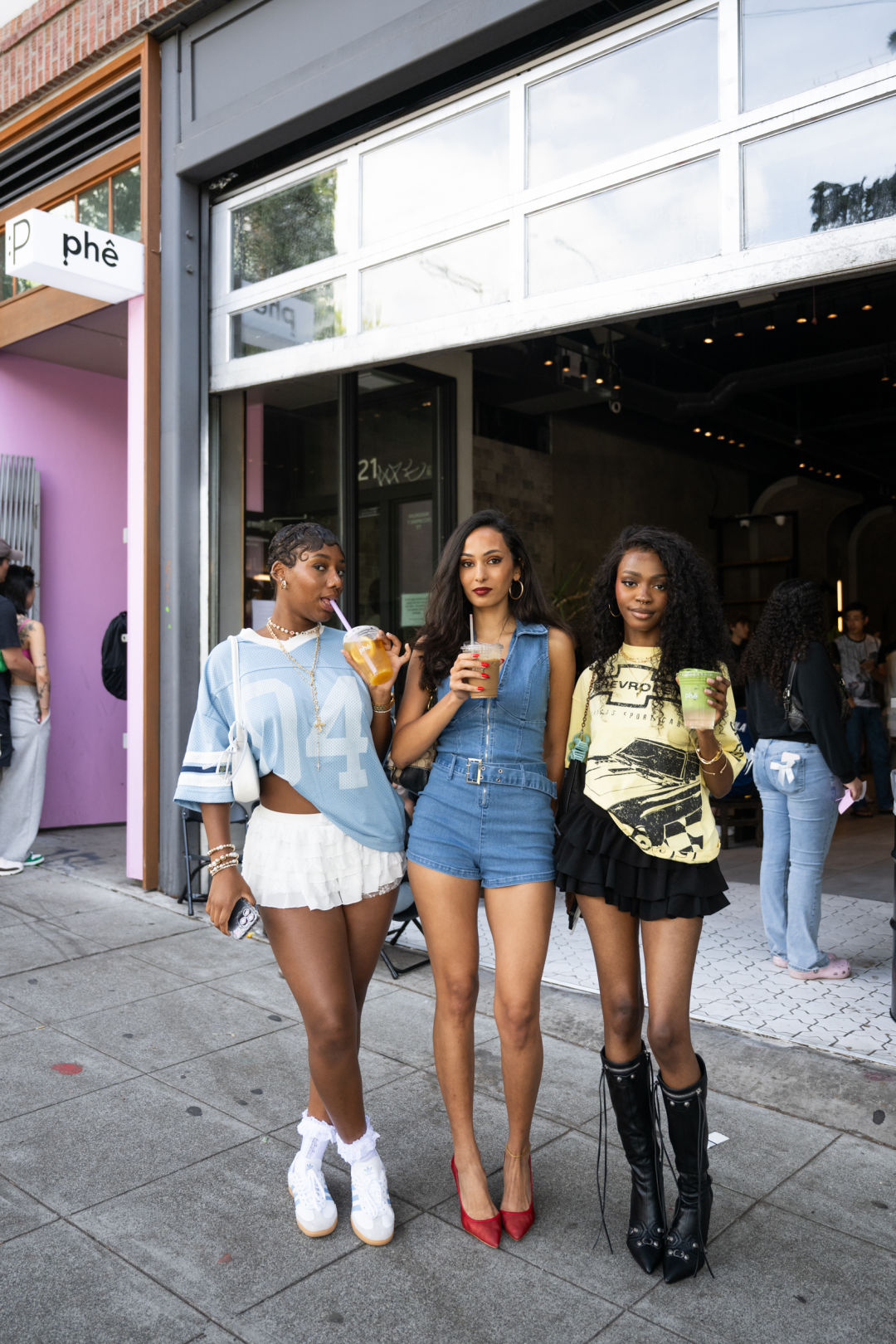
No better place to show off a good fit than the line for matcha.
Total time spent: 33 min
Favorite overheard quote: “Oh, I did that TikTok drink on my first visit; now I just get the matcha latte.”
On a beautiful Saturday afternoon, the sidewalk outside the converted garage space exploded with some 40 folks in line, another 20 waiting for drinks, and packed tables inside. People were chatting, maxing and relaxing all cool, with plenty of group selfies and camp collar shirts. It was a party—for everyone except the frustrated walkers trying to plow through the throngs.
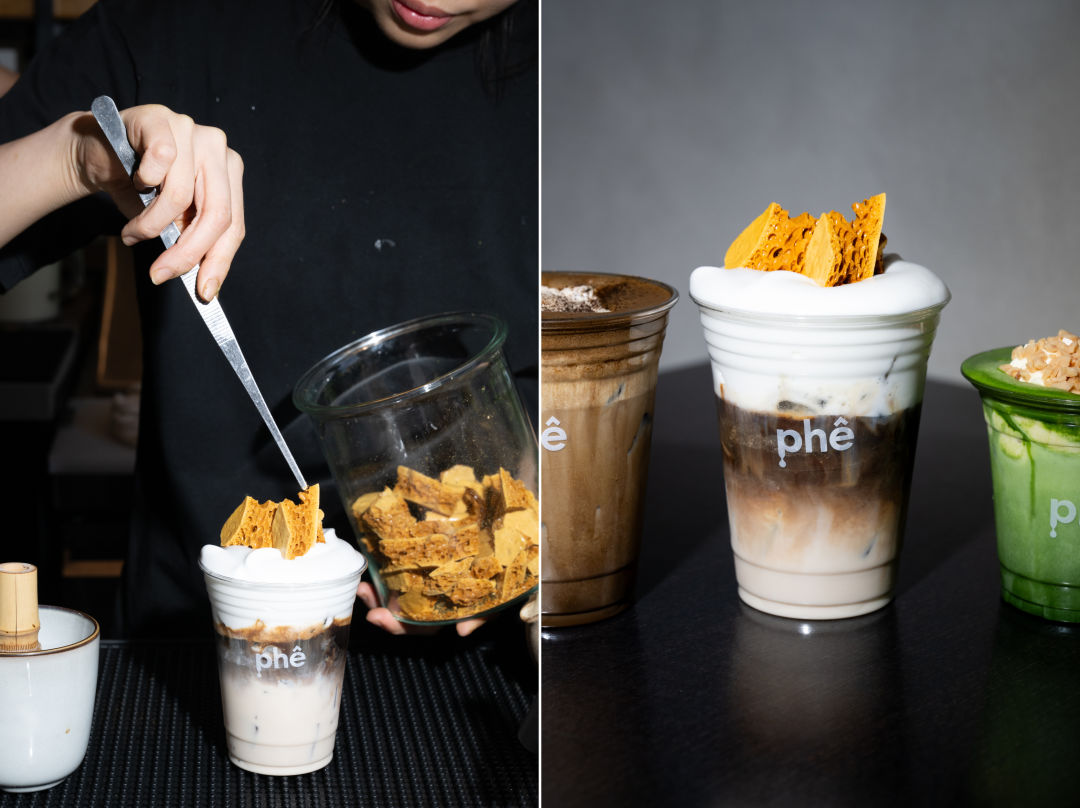
Phê gets creative with its matcha, hojicha, and coffee drinks, adding foam, corn, honeycomb, and more.
It took about 10 minutes to get to the door, where a sign indicated they’d run out of matcha. They were also out of banana pudding for their viral lattes. Most people shrugged it off: Phê’s coffee, hojicha, and other drinks, along with its surprisingly large food menu, are still incredibly exciting. I ordered lychee iced tea and honey yuzu chrysanthemum iced tea from the extremely hurried—but confidently so—staff.
“The hype is wild,” says Vy Le, who owns Phê with her family. “Our emotional checkpoint is simple: Do people feel good here?” From what I can tell, they feel fan-freaking-tastic. Waiting for drinks, a pair of regulars tells me they have figured out the ebb and flow of the line—come early mornings, they say. One had the Phê Keo (coffee, milk, caramel with cold foam, and toffee bits) in the morning with no line, and loved it so much they came back and waited for 25 minutes for another one.
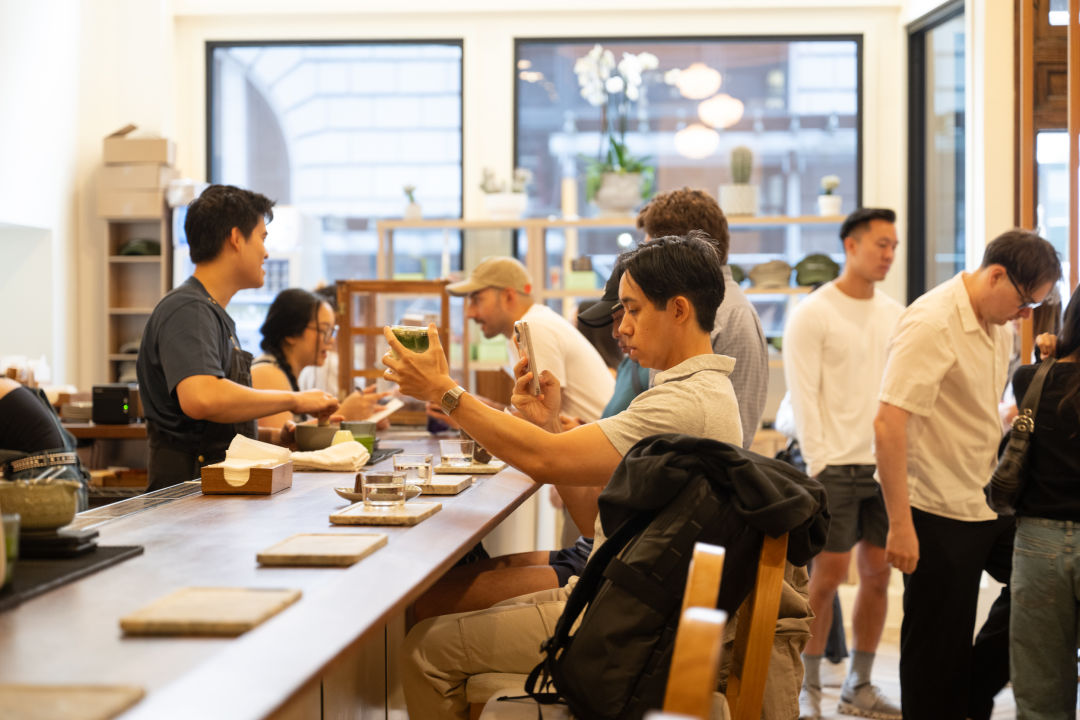
If it doesn’t go on the ‘gram, did it even happen?
Total time spent (1st visit): 20 min
Total time spent (2nd visit): 45 min
Favorite overheard quote: “Dude, this matcha strawberry? Like, wow dude. Wow.” —A guy in line who found out that Taz served only tea, left, and came back with iced coffee before ordering his drink.
Compared to Phê’s open, beautiful soirée, Taz is a hidden escape inside a nondescript downtown office building. I stepped into the line with a measure of faith at 1:30pm on a Monday, just as four others did, too. And 14 more joined behind us before I reached the door. A couple from NYC heard about it on Beli, a welcome break from the usual Instagram and TikTok. Other than the few tourists, the line was mostly office workers nervously checking the time. Ten minutes later, I made it to the front, where I stepped into a wood-framed glass entrance and was greeted by the owner, Ly Tran.
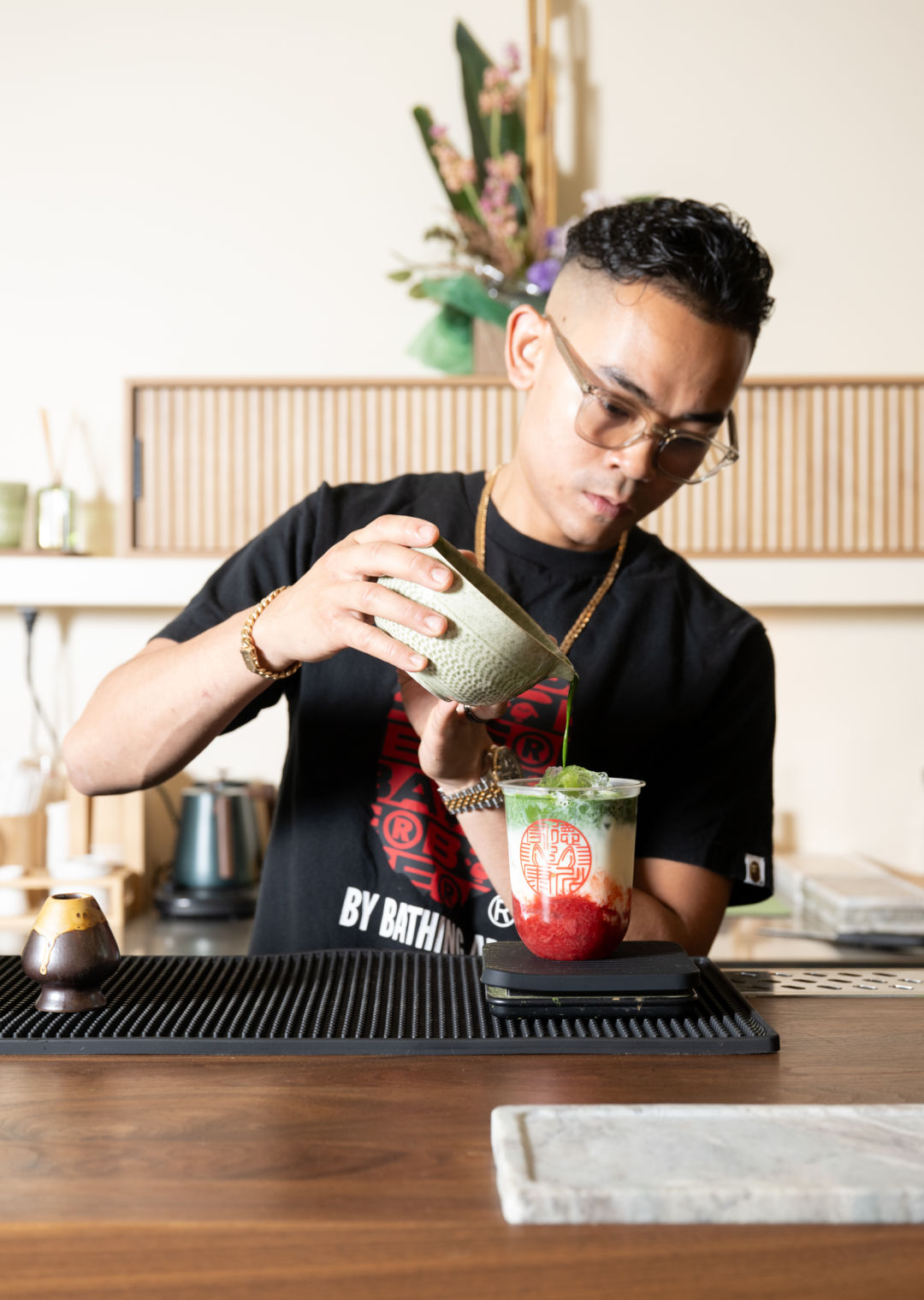
Each drink at Taz comes from the studious work of the team behind the counter.
Inspired by the small mom-and-pop shops he saw on trips to Japan, Tran aims to deliver the personalized service and calm he experienced. The serenity of the blonde wood, white walls, and soaring ceilings is punctuated by two murals and a pair of tatami-style tables. Along the windows facing the street is a shrine to Tran’s former French bulldog, Taz, the café’s namesake.
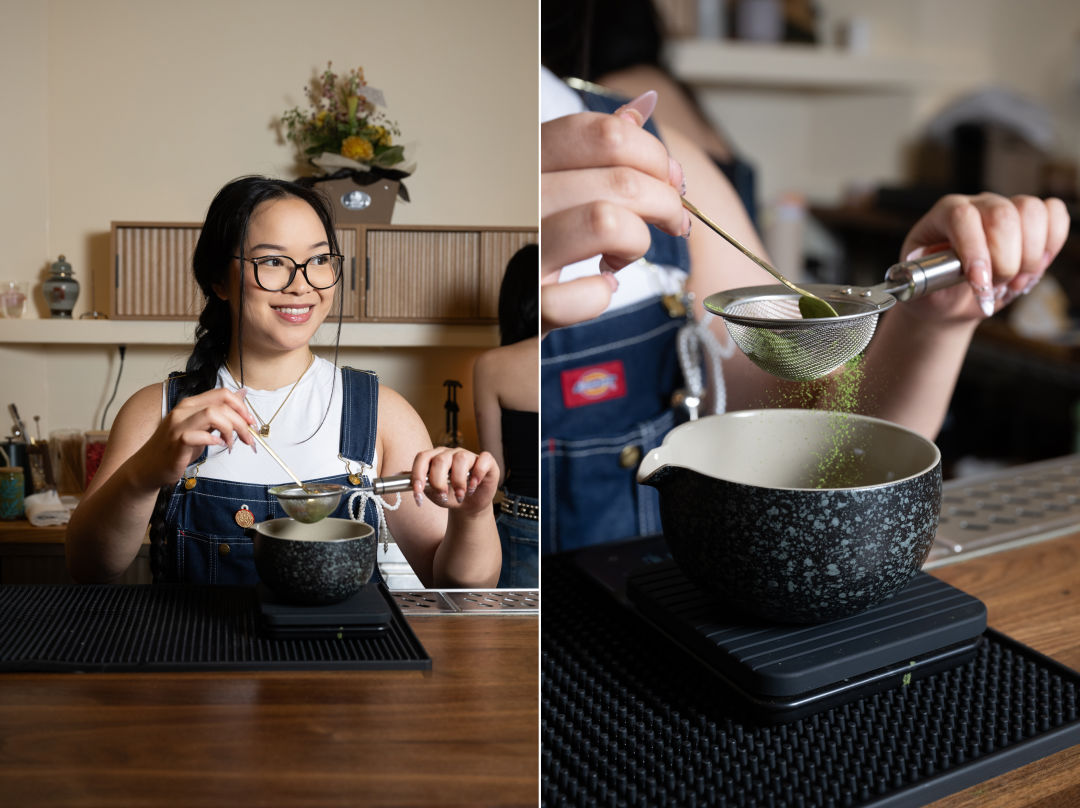
Elaborate matcha drinks at Taz require many careful steps.
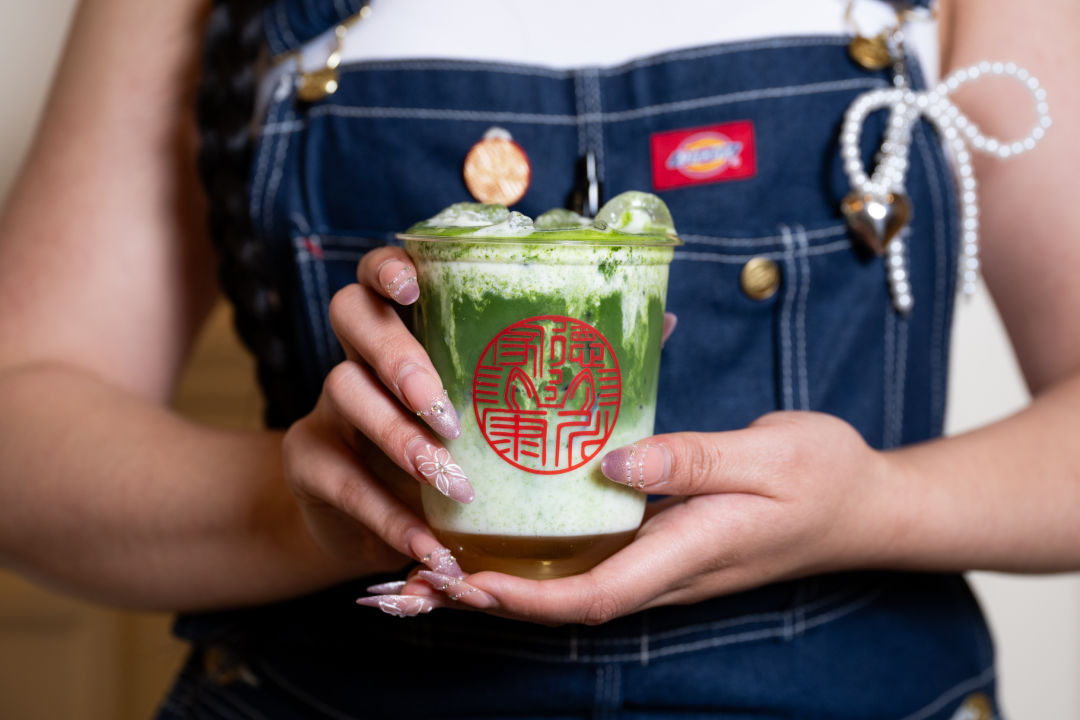
Vibrant colors make matcha drinks the must-have accessory.
Tran ushered me to the counter, where an employee explained the difference between matcha and hojicha. While both start from the same green tea, matcha is first steamed, then ground into a bright green powder with grassy and vegetal notes. Hojicha is first roasted and later ground into a reddish-brown powder, imparting smoky and malty flavors. Seven people worked at a frenetic pace behind the counter on orders, transfixing me as they whisked my hojicha into a mushroom-brown frothiness and topped it with the cool black sesame foam Tran recommended.
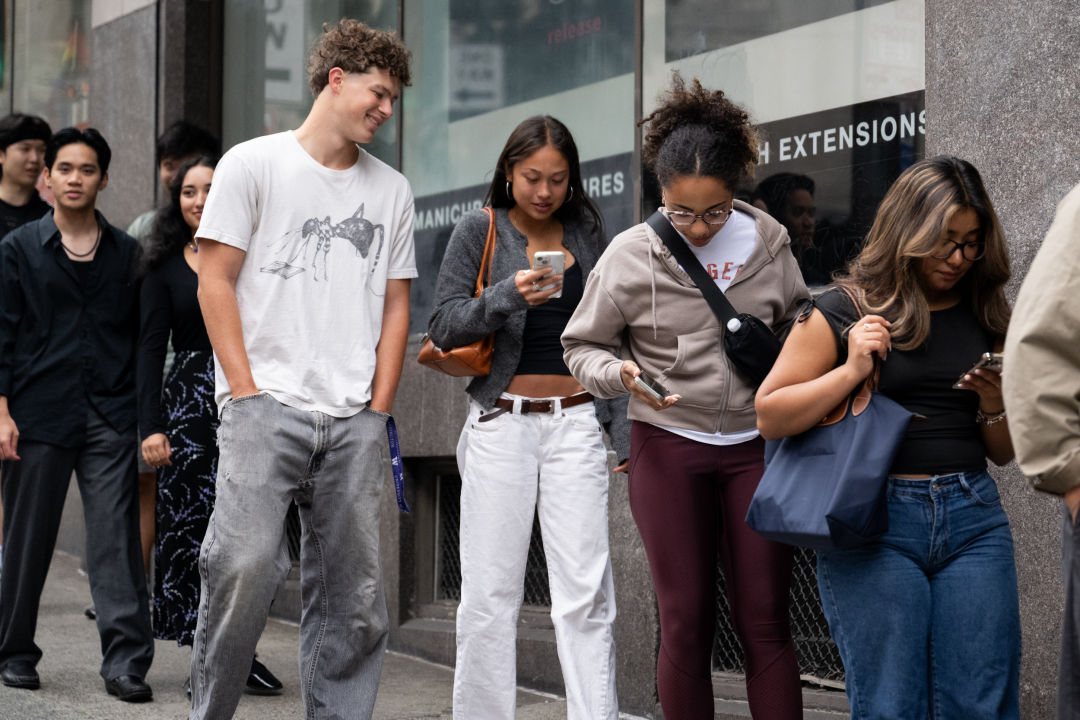
The snaking lines come from each of the new matcha cafés that have opened.
When I came back to Taz on Saturday, I noticed the same friend group I stood behind at Phê amid the crowd. This experience, as most others in the line would say, “hit different.” The queue of roughly 40 much-younger people extended around the corner into the alley, between a row of trash cans and an open parking lot—a mix of Seattle folks finally trying it out and tourist groups. My wife and I grabbed two open seats at the bar, drank water in neat glasses, and cooled off while the staff buzzed around each other like matcha baristas in a high-speed ballet.
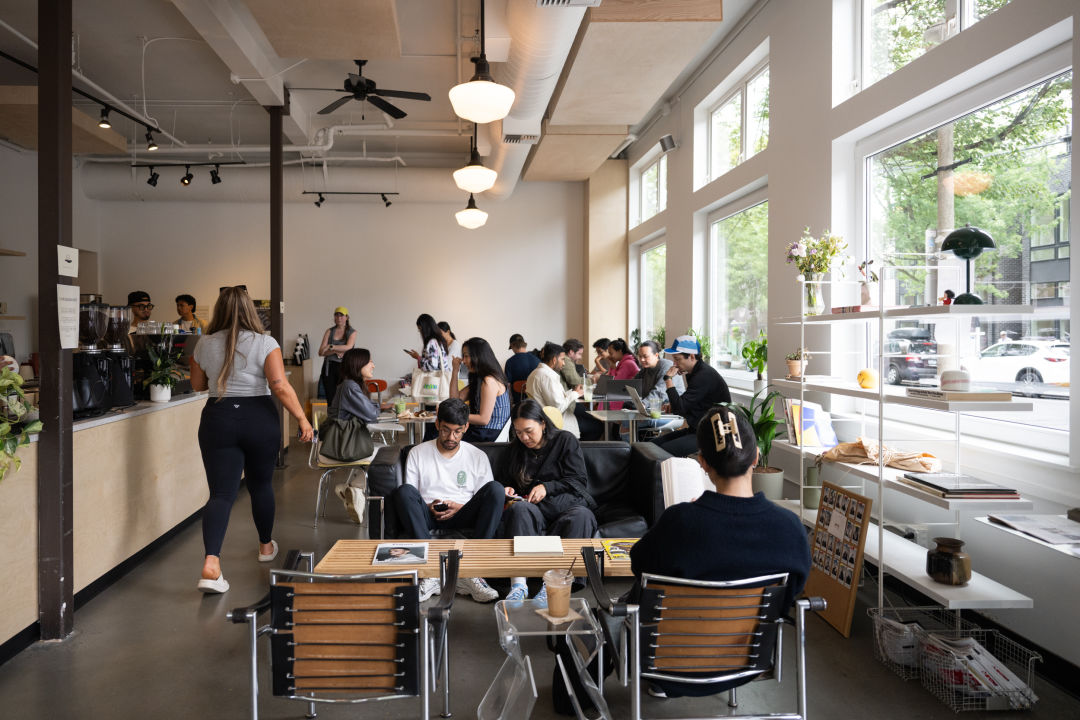
Yoka Tea invites neighbors and the community to sit down and stay awhile.
Total wait time: 9 min
Favorite overheard quote: “Can you believe this is actually in Madrona?”
On my first visit to Yoka Tea, a Wednesday at 10am, co-owner Marcellus Beza said, “Hey,” like we knew each other. As did co-owner Amy Park and employee Sidney Landers, the only other staff there. Their sincerity immediately disarmed the hater in me. Phê and Taz felt like taking a fun trip, Yoka felt like a place I’d stop on the way home.
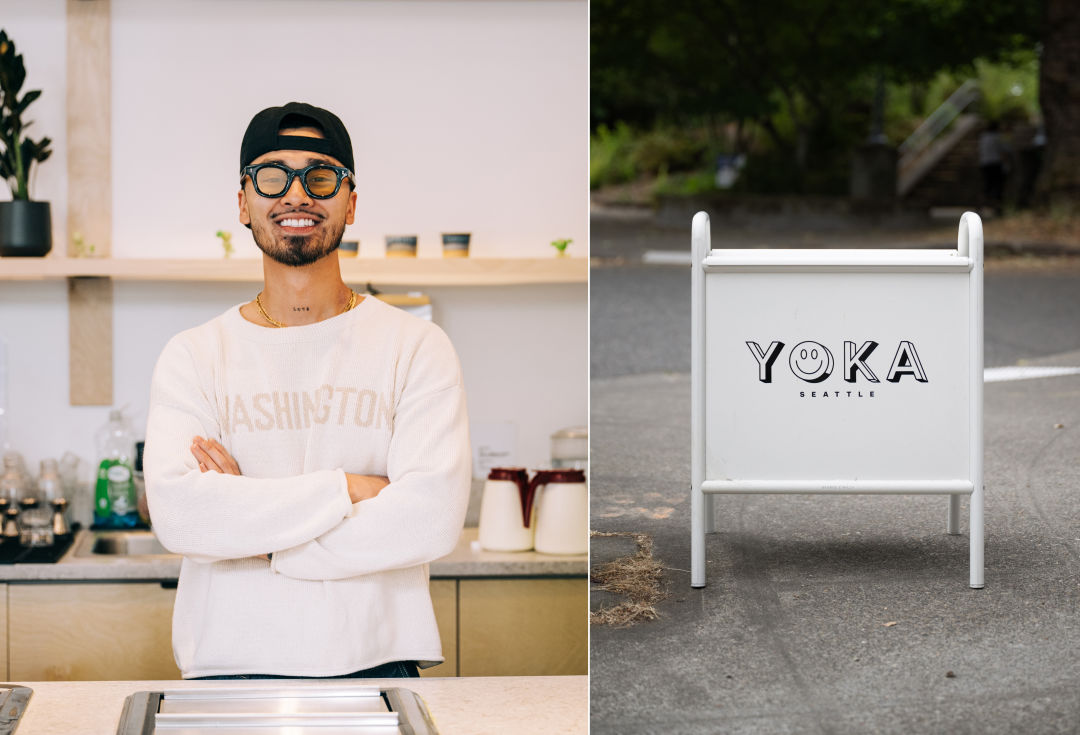
The only Seattle freeze at the friendly Yoka Tea is the ice in the cold drinks.
Everybody in line except one was there for the first time. The crowd consisted of a wider range of ages and fashion choices. Just the day before, a friend of mine exclaimed, “This coffee place is wild, bro; there’s jelly in here!” They were out of that, but Park recommended the matcha lychee sparkler. Landers began whisking matcha gracefully. The intense lychee-ness against the grassy matcha floored me. It was the best sip of anything I’ve had all year, hands down.
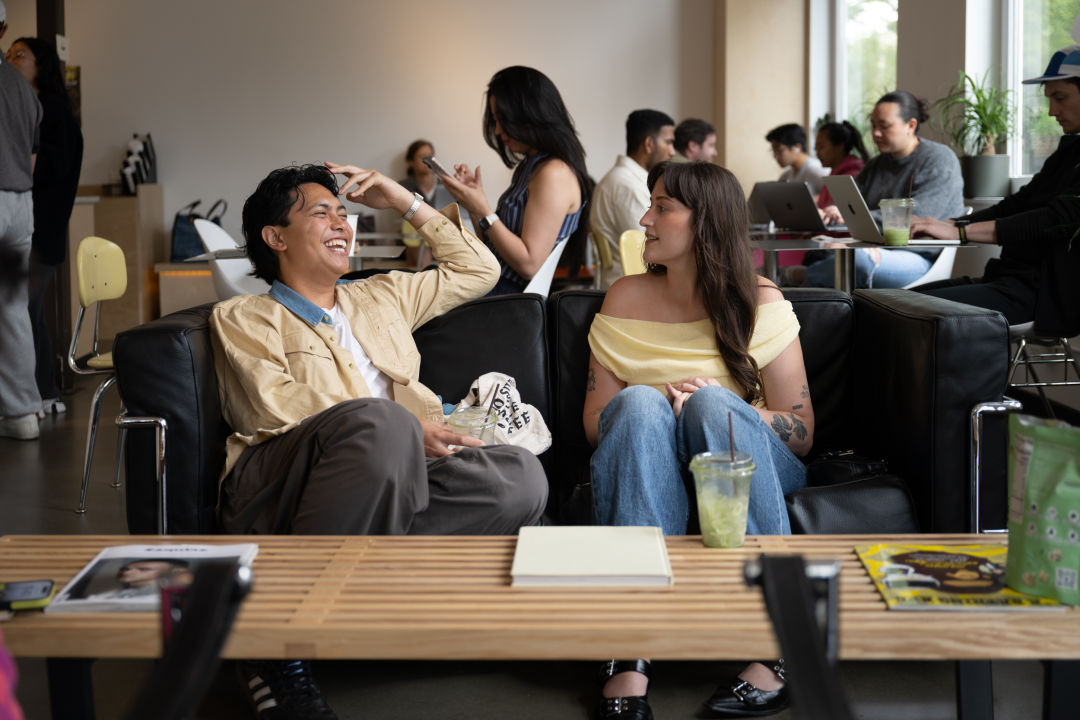
A bit of NYC style lands in Madrona at Yoka Tea.
Park and Beza created Yoka Tea after visiting New York, hoping to replicate that vibrant third-space energy in Seattle. Amy mentioned that a few NYC transplants in the neighborhood told her the space reminds them of their former home. As a Brooklyn transplant myself, I agree. But not Manhattan. Definitely Brooklyn. It has quickly become a popular neighborhood spot (thanks, in part, to buzz-building pop-ups), and they just started a local run club. Every time I walk past it, it feels more familiar, as if it’s always been here.
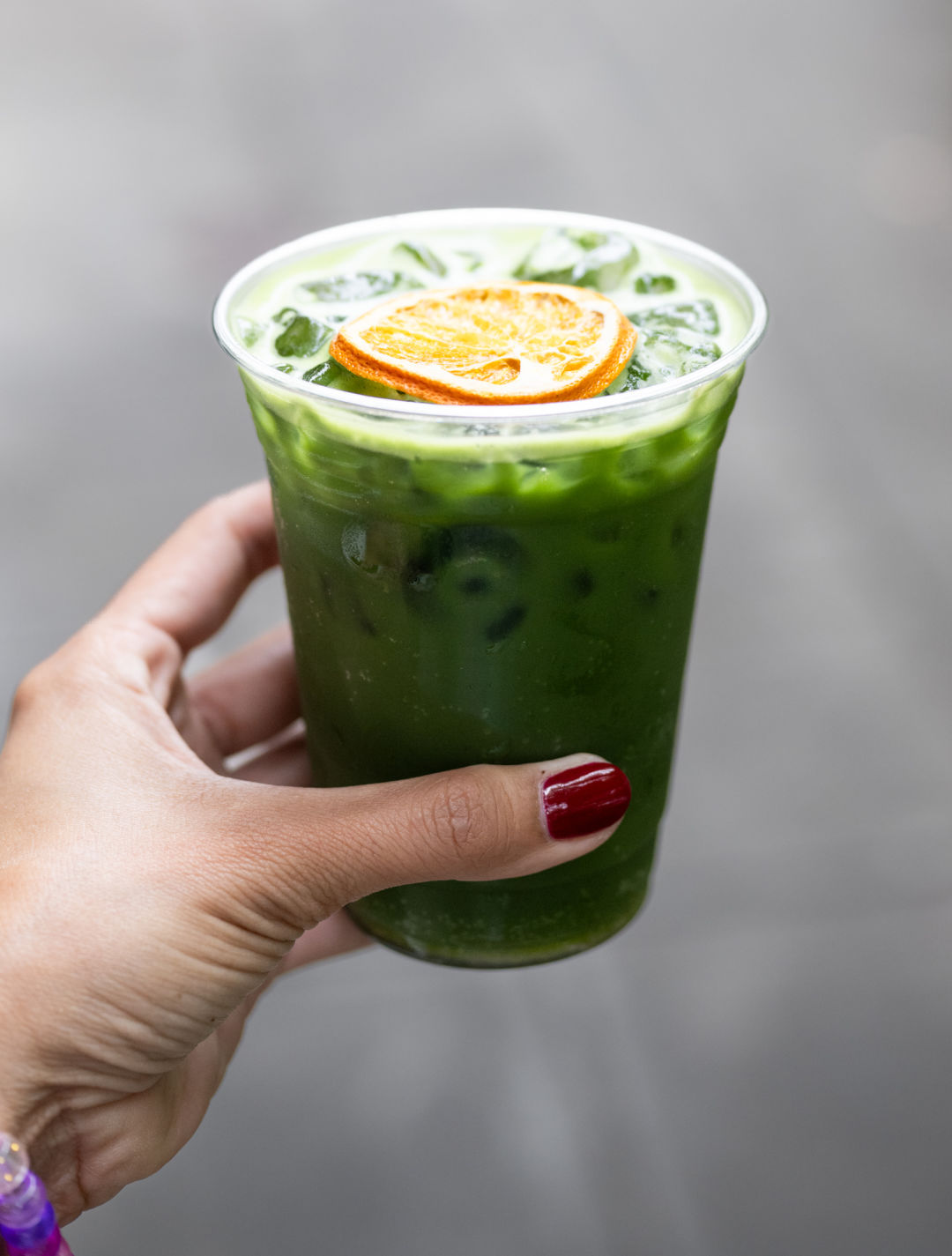
Matcha drinks make it look easy being green.
I walk past Yoka Tea with my dog nearly every day. The space basks in an abundance of natural light, and the seating setup dares you to take a break. Two days after my first visit, the line was to the door—maybe 12 or 15 people. On Sunday, the line stretched to the corner and down the sidewalk, easily 30 people. Several groups of people under 40 congregating in one location in Madrona? It makes us feel hip.










